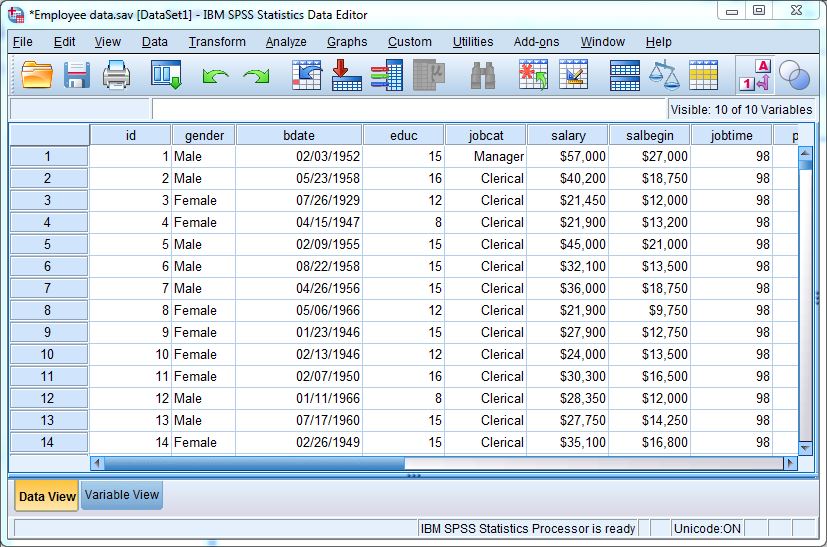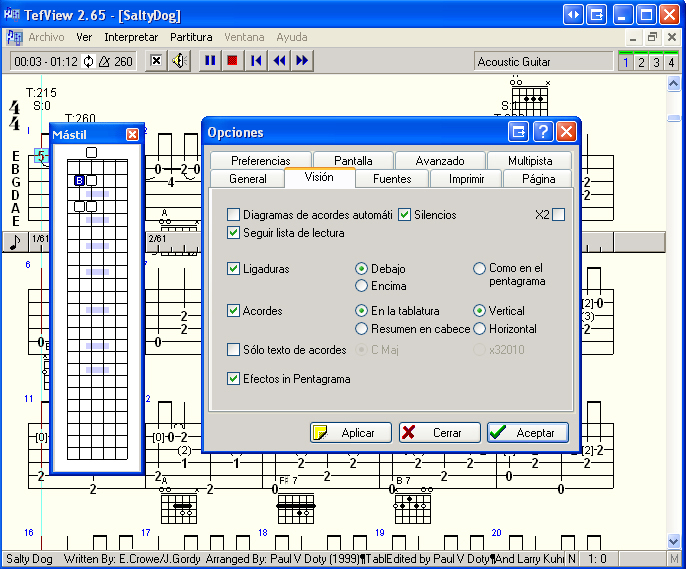
The first step in the notation of either melodic or rhythmic guitar music is to determine the meter so you know which blank tablature you need to use (in 3, in 4, or in 6). The same is true of any rhythm guitar arrangements you devise. Notating melodies you compose, unless you have the means to record them, is the only way to ensure that you will not forget them.
#TEFVIEW TABLATURE HOW TO#
If you plan on completing the course of study in Rhythm Guitar, the Twelvemonth Music manual on rhythmic styles of play, do not download these chord diagrams, since this course of study includes detailed instructions as to how to derive these chords yourself, given only the names of the chords.Ĭlick here to download the 18 common chord diagrams Blank Visualinear Tablature Scoreįiguring out how to play familiar melodies on the guitar, and then notating them in visualinear tablature, is an effective way to develop musicianship and to become better acquainted with the guitar and with the tablature. A close familiarity with the 18 common chord diagrams, which are included in the Quick Guide to the score write-up format, is therefore essential to making use of the tablature scores and the Study Notes. The 18 common chords, and the suggested fingerings for these chords, are referred to repeatedly in the Study Notes that are included in the score write-ups for rhythm guitar arrangements. These common chords are referred to in visualinear tablature scores solely by means of the chord symbols by which they are identified, and are not diagrammed beneath the tablature. The 18 common chords comprise a small vocabulary of basic chords that are used with relatively great frequency in rhythm guitar music.

Ensemble music in a wide variety of musical styles can be learned affordably, and in a self-directed manner, by individually selecting the ensemble pieces you would like to learn, and ordering them in the e-score format.Ĭlick here to download the CD playlists for the RGCC 18 Common Chords This will allow for an informed choice regarding the possible musical benefit of learning to play other guitar ensemble pieces. Besides their obvious usefulness to readers of Melody Guitar, these e-scores can be of use to more experienced players as well.īy reading through these e-scores, an experienced player can quickly become familiar with visualinear tablature, with the e-score format, and with the guitar ensemble format. The e-scores for these Exercises are an interesting and effective resource for learning to read the visualinear tablature notation for this music, and for learning to play the music. The last three Exercises are examples of ensemble arrangements in two (duet), three (trio), and four parts respectively. The Melody Guitar Exercises consist mainly of simple familiar melodies.
#TEFVIEW TABLATURE SOFTWARE#
As a Silver Certified Application Developer, Solvusoft is able to provide the highest level of customer satisfaction through delivering top-level software and service solutions, which have been subject to a rigorous and continually-audited approval process by Microsoft.Click here to download the Adobe Reader Melody Guitar Exercises To achieve a Silver competency level, Solvusoft goes through extensive independent analysis that looks for, amongst other qualities, a high level of software expertise, a successful customer service track record, and top-tier customer value. How is the Silver Competency Level Attained?
#TEFVIEW TABLATURE WINDOWS#
Solvusoft's close relationship with Microsoft as a Silver Certified Partner enables us to provide best-in-class software solutions that are optimized for performance on Windows operating systems.

Solvusoft is recognized by Microsoft as a leading Independent Software Vendor, achieving the highest level of competence and excellence in software development.

Solvusoft: Microsoft Silver Certified Company Recognized for best-in-class capabilities as an ISV (Independent Software Vendor)


 0 kommentar(er)
0 kommentar(er)
